Upcoming Symposium focusing on ‘The Lives of Sundarbans’ - GetBengal story

The Sundarbans, one of the largest mangrove forests in the world
Way back in 2016, the world-renowned ‘Nature Journal raised the most pertinent question of our time: Are we failing to protect threatened mangroves in the Sundarbans World Heritage ecosystem?
The Sundarbans, the largest mangrove ecosystem in the world, is under immense threat from historical and future human exploitation and sea level rise. Limited scientific knowledge of the spatial ecology of the mangroves in this world heritage ecosystem has been a major impediment to conservation efforts. The Sundarbans stretches along the coast of Bangladesh (6,017 km2) and India (4,000 km2) and forms the largest single block of halophytic mangrove forest in the world. This unique ecosystem provides the breeding and nursing habitats for diverse marine organisms, houses the last habitats of many endangered animals like the famed Royal Bengal tiger (Panthera tigris) and the Ganges river dolphin (Platanista gangetica), supports the livelihoods of about 3.5 million coastal dwellers and helps reduce the death toll of tsunamis and cyclones in the area. It was designated a Ramsar site under the Ramsar Convention in 1992. UNESCO declared the Sundarbans a World Heritage Site in 1997, because of its ‘Outstanding Universal Value’, biological diversity and the ecosystem services that the area provides.
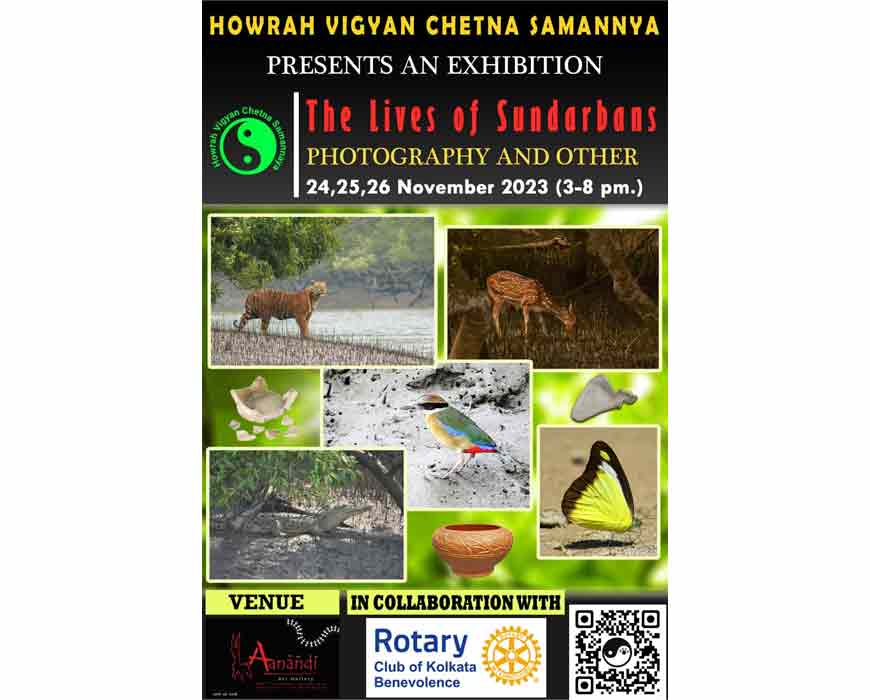 Howrah Bignyan Chetona Samanwaya, a well-known NGO, focuses on 'Nature and Environment'
Howrah Bignyan Chetona Samanwaya, a well-known NGO, focuses on 'Nature and Environment'
However, the largest mangrove ecosystem in the world is under threat from historical and future human exploitation and environmental issues such as the rise in sea level, increase in salinity, man-made hazards, deforestation etc. Limited scientific knowledge of the spatial ecology of the mangroves in this world heritage ecosystem has been a major impediment to conservation efforts. Fortunately, though, not all is lost yet. A large number of dedicated scientists, amateur environmentalists and NGOs have been working tirelessly to save the Sundarbans. The current president of Rotary Club of Kolkata Benevolence, Chandan Gupta is an environmentalist who has been passionately involved with different NGOs for a long time and has been working in the field of wildlife and conservation and has worked with WWF. He has been very proactive in his endeavour to create awareness among the masses about the issues pertaining to the welfare of the Sundarbans ecosystem and has sensitized his club members and involved them in raising awareness programmes. Last year, a symposium was held on the fragile ecosystem of the Sundarbans.
Howrah Bignyan Chetona Samanwaya (Howrah Science Awareness Coordination) is a well-known NGO that prioritizes ‘Nature and Environment’ as one of its major agendas. This year, the Rotary Club of Kolkata Benevolence joined hands with Howrah Bignyan Chetona Samanwaya (Howrah Science Awareness Coordination) to host a three-day elaborate programme on ‘The Lives of Sunderbans.’ The programme will be inaugurated on November 24 at 5 pm at Anandi Art Gallery, 4/B/1 Priyanath Ghosh Lane, Howrah in the august presence of participant-dignitaries including renowned photographer Atanu Paul, Animesh Sinha, Sumit Mukherjee, Purnabasu Chowdhury, Prasenjit Dawn and many others.

A three-day exhibition of photographs and artifacts documenting the life-livelihood, culture and biodiversity of Sundarbans will be on display at the venue along with folk art and specimens of archaeological artifacts discovered in the Sundarbans. Photos of well-known shutterbug Atanu Pal will be on display along with moments captured by research scientist and environment professor, Dr. Purnabasu Chowdhury. He has clicked islands of beautiful forests that rise and sink again in the vast Bay of Bengal. These places are home to many unique species and Dr Chowdhury’s discerning lens has captured these various forms of life. The exhibition also includes exquisite moments frozen in frames by Sumit Mukherjee, former researcher, the Anthropological Survey of India along with photographs by Prasenjit Dawn, a young teacher and nature observer of Shyampur College and environmentalist Montu Hait. The exhibition will be open to the public daily between 3 pm and 8 pm.
A series of area-specific panel discussions will also be held daily during this three-day show. Beginning at 6 pm, the inaugural day’s programme will feature a very interesting discussion on ‘Boats of Sunderban: Specialty and Evolution’ (Sundarbon er Nouka: Taar Boishishto O Biborton) Renowned anthropologist Swaroop Bhattacharya who is better known as the ‘Boatman from Bengal’ for his three-decade-long extensive research on the myriad types of boats of Bengal will deliver the lecture. He will acquaint the audience with some of the unique boats that are constructed and used exclusively in the Sundarbans for their ability to maneuver the creeks.
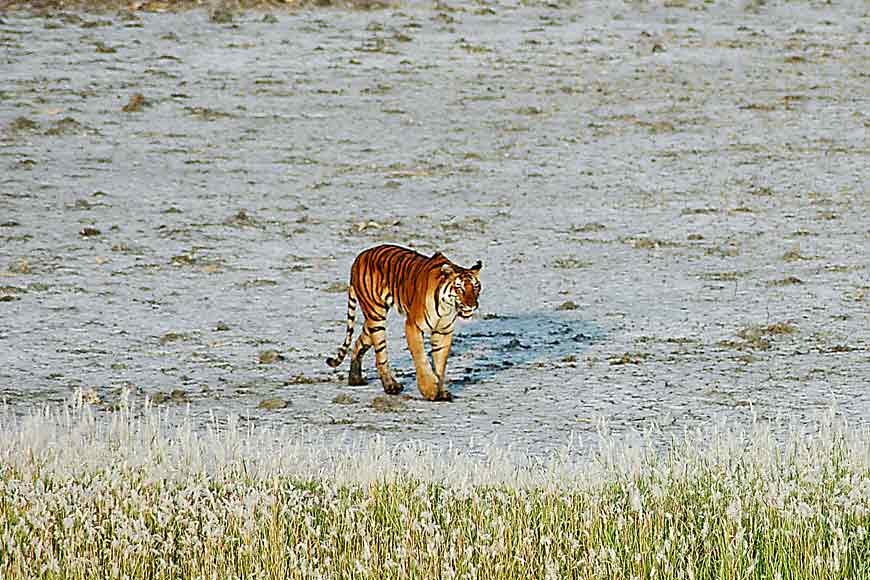
On November 25, which is the second day of the programme, two panel discussions will be hosted. Beginning with ‘Characteristics of Tigers of Sundarbans’ (Sunderboner Bagher Choritro O Abhijajan) by Animesh Sinha at 6.30 pm. Sinha has been working in Sunderbans for more than three decades and is an active member of the Sundarbans Environment and Eco Development Society (SEEDS). Dr. Purnabasu Chowdhury, head of the Department of Environment Studies, University of Calcutta, will deliver the second lecture. He will discuss the ‘‘Biodiversity of Sundarbans.’ (Sundarbon er Jeeb Boichitro). On 26th November, Sumit Mukherjee, a former researcher at the Anthropological Survey of India will speak on ‘Archaeological Resources of Sundarbans’ (Sundarboner Nritatwik Samriddhi O Boichitro).
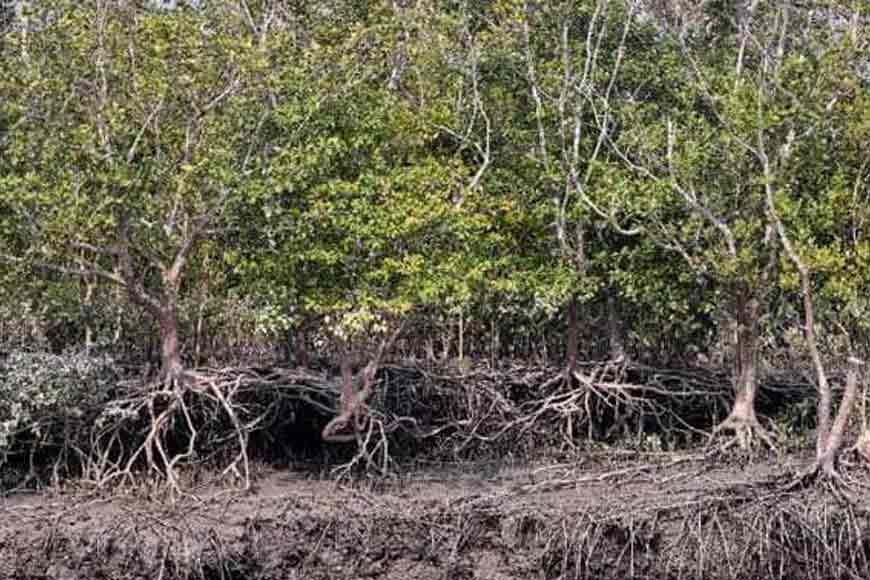
The mangrove forests of Sundarbans have an extended history of conservation and management, crucial for understanding present-day conservation challenges in the region. Evidences of human ingress, in the form of proto-urban settlements, dating back to the Mauryan period, have been discovered and highlighted in discussions of Sundarbans’s history. The Mauryan Empire, which encompassed most of the Indian sub-continent between 321–226 BC, laid emphasis on the management of forests classifying them based on their intended use. The Sundarbans were also a part of the forest area managed by the empire. However, this management system was not followed during the Gupta Dynasty (AD 320–415), when extensive tracts of land were cleared and converted into agricultural land. The narrative of reclamation of land becomes stronger in the pre-Mughal era which can be dated back to before the rule of the Muslim–Indo–Turkish, from AD 1204 to 1575.
There are accounts of abandonment of the region due to floods that led to the dislocation of many villages in 1584. Depopulation is believed to have continued in the following years and the region was overrun by forests. While some attribute it to Portuguese and native pirate incursions, narratives on shift in the river course, leading to increased salinity of the agricultural land, are also present.
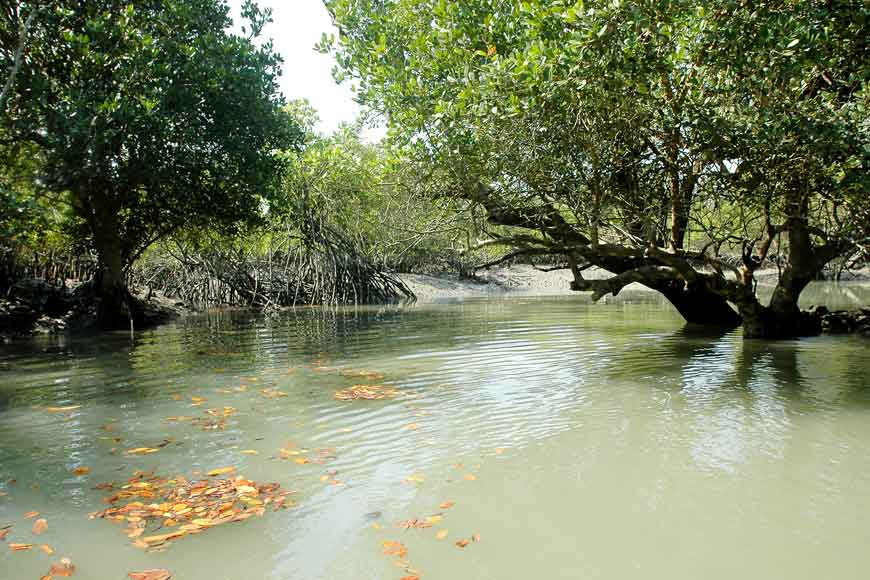
The process of reclamation continued well into the nineteenth century, until Sundarbans was declared a protected forest in 1878, which marked restriction of the use of forest resources in certain areas. In the meantime, the government continued leasing land for cultivation, which ensured the inflow of revenue. The legal restriction on the natives to extract resources was used by the government as an opportunity to secure and upgrade their stock of various kinds of timber.
Sundarbans, in the subsequent years, interestingly emerged as an insurance provider against unanticipated downturns. The region provided food grains to distressed areas during the famine that hit Bengal in the nineteenth century, and sheltered many immigrants from central and east India
Unregulated alteration to the forest ecosystem, with increased forest area brought under human settlements and agricultural land, along with the construction of embankments, triggered a number of extirpation (local extinction) and contraction of habitat for several species, over the period. The species now known to be extirpated from the region are: the water buffalo (Bubalus bubalis); the swamp deer (Cervus duvaucelli); the Javan rhinoceros (Rhinoceros sondaicus); the gharial (Gavialis gangeticus); and the chitra turtle (Chitra indica). The barking deer (Muntiacus muntjak) is also possibly locally extinct as it was last sighted in the 1970s.
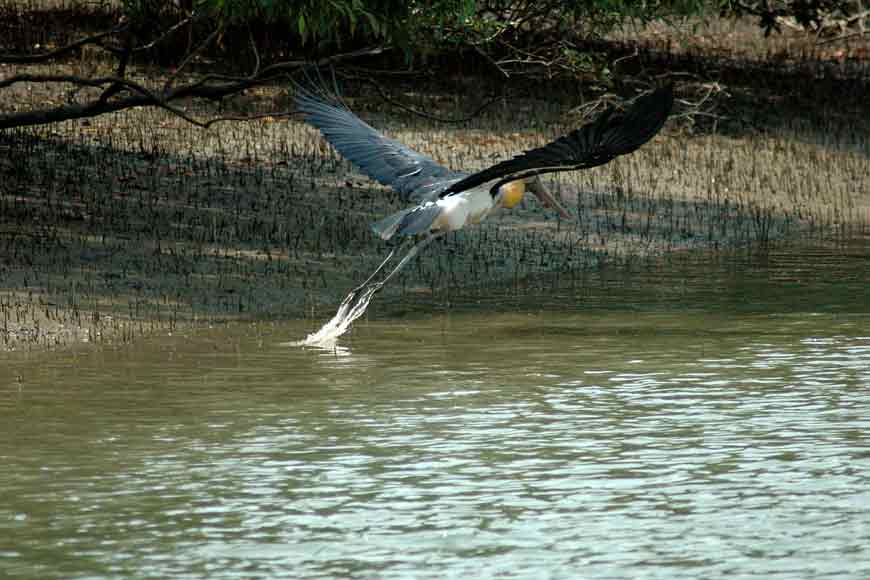
Degradation in the biodiversity, quality and the area of Sundarbans have forced the realization that the forest is an exhaustible resource, leading to initiatives for its conservation. Today Sundarbans is a National Park, Tiger Reserve and Biosphere Reserve. It was also included in the World Heritage Sites in 1985 by UNESCO. Gupta and his friends are working to preserve the natural bounty of the area and sensitize people to help preserve this unique ecosystem for the benefit of mankind.











